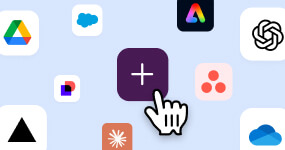Alan is a one-stop health platform. An independent insurer and service provider, its mission is to revolutionize the healthcare system by offering simpler, more efficient access to healthcare. For example, the company provides over 90% of reimbursements in under 24 hours. In order to achieve this level of performance, Alan has to operate in a decentralized environment, with innovative and scalable software tools.
According to Kamilia Bouraoui, CRM & Sales Tools Manager at Alan, “We had to put methods and automations in place to ensure our sales team are more productive and efficient.” Numerous internal processes rely on Slack, as well as integrated AI assistants.
Indeed, in Slack, work is organized in dedicated spaces called channels that can be created by users for any project or team. At Alan, all information is posted in Slack in 100% public channels, promoting transparency and inclusion. As a result, all this shared intelligence facilitates more rapid and better-informed decision-making.
Founded in 2016, and the first new independent health insurance company to receive a license in France, Alan has rapidly become a health partner in insurance, prevention, and day-to-day care. Offering a unique service focused on physical and mental wellbeing, Alan uses technology to simplify access to healthcare, enabling an average response time of two minutes and same-day reimbursement in 90% of cases, almost half of these within five minutes. With 600 employees, this insurer operates in Belgium, Canada, France, and Spain, serving more than 700,000 members and 23,000 businesses.
In addition to insurance, Alan offers innovative services such as personalized preventive programs, a virtual clinic available seven days a week, an online optical center, and numerous other ongoing innovations. For example, its members just need to take a photo of their medical bill with their smartphone to receive their reimbursement within minutes. Alan relies on the Slack ecosystem in-house to ensure collaboration and productivity among employees. “We operate in a completely decentralized and transparent environment,” explained Kamilia Bouraoui, CRM & Sales Tools Manager at Alan. “My job is to create tools and processes that allow our sales team to be as efficient and productive as possible.”

Slack is so much more than a chat tool; it’s like Alan’s nervous system. It’s an effective communication platform.
Slack is Alan’s main communication tool with 100% public implementation
A team known as “Q-Branch”, in reference to James Bond, is responsible for managing environments like Slack and designing productivity tools for all Alan’s teams across various departments. These teams then have their own operations teams responsible for implementing productivity tools and more specific automations.
But to keep track and engage in discussions about all the operations happening within an insurance company? “Slack is our main communication tool, it has completely replaced email, even for official news such as in-house communications,” added Kamilia Bouraoui.
Slack has become Alan’s “nervous system” — an effective knowledge hub due to the insurer’s strong culture of written communication. For example, each employee publishes a summary of their activity in a public channel every week, highlighting their achievements and priorities for the week ahead. This helps ensure everyone is up-to-date with their colleagues’ priorities and can access the same shared information. For example, if a salesperson is about to lose a deal, a Slack message will be posted in a dedicated channel which keeps colleagues updated and allows them to offer support.
One of the major benefits of Slack is the ability to activate a huge number of processes without leaving the ecosystem. “All of our opportunities, our inbound requests, our alerts, our marketing communications, and our meetings are posted and managed in Slack channels,” explained Kamilia Bouraoui.
This 100% decentralized public environment has had a significant impact on employee autonomy. Slack allows employees to work whenever and wherever they want while sharing the same knowledge between teams. This autonomy has been beneficial in terms of operational efficiency. In 2024, Alan’s sales teams increased their productivity by an average of 30% due to automations, process optimizations, and AI playing a key role.
Thanks to native integrations and API in Slack, Alan has been able to implement its own productivity tools. The company also encourages all employees to be autonomous and create their own workflows and automations in Slack to simplify their day-to-day tasks.


As a result, 90% of Alan employees use AI on a daily basis. Many AI assistants have been integrated into the company’s different departments and processes, including sales. The lead qualification process has been optimized for salespeople, thanks to AI assistants that can automatically generate summaries and suggestions for prospecting emails. These assistants are capable of summarizing client interactions to provide context for salespeople. Other AI assistants generate meeting summaries directly within Slack channels. Through AI, Alan has reduced the preparation time required for meetings with sales prospects or clients by 50%.
AI is used at all levels within Alan, particularly in-house for functions such as support, bugs, and user questions. When an employee asks a question in a Slack channel, an AI assistant automatically creates a ticket and categorizes it to ensure it is assigned to the correct recipient. A response is then automatically generated before being passed on to the team, if necessary. Consequently, Alan makes full use of AI to perform all kinds of repetitive, time-consuming tasks, freeing up employees to focus on actions with more added value.
In the future, the company plans to further exploit the advantages offered by Slack’s integrated AI to automate and orchestrate many new processes for daily user activity. If AI generates a large quantity of valued information, this could, for example, improve the company’s CRM to enhance data quality. Similarly, Alan plans to introduce an autonomous AI assistant in its sales department to generate prospecting emails and schedule meetings.[# /]















